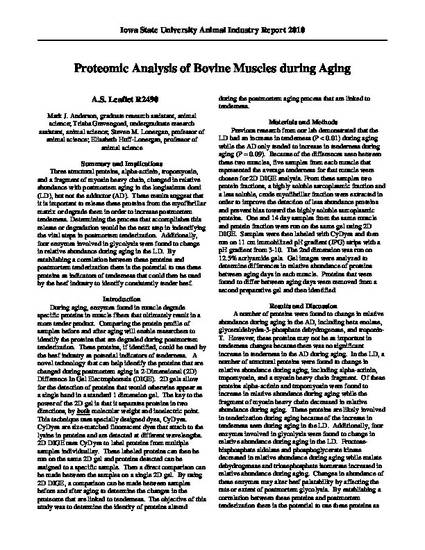
Three structural proteins, alpha-actinin, tropomyosin, and a fragment of myosin heavy chain, changed in relative abundance with postmortem aging in the longissimus dorsi (LD), but not the adductor (AD). These results suggest that it is important to release these proteins from the myofibrillar matrix or degrade them in order to increase postmortem tenderness. Determining the process that accomplishes this release or degradation would be the next step in indentifying the vital steps in postmortem tenderization. Additionally, four enzymes involved in glycolysis were found to change in relative abundance during aging in the LD. By establishing a correlation between these proteins and postmortem tenderization there is the potential to use these proteins as indicators of tenderness that could then be used by the beef industry to identify consistently tender beef
Available at: http://works.bepress.com/steven_lonergan/50/
